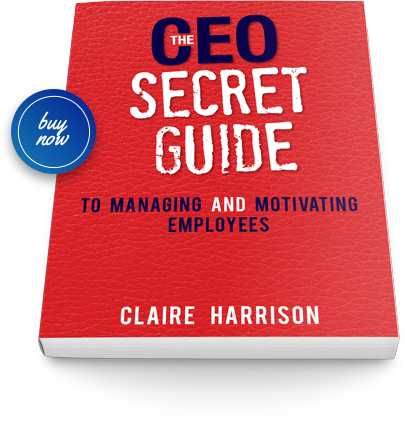The modern workplace is a diverse environment. With people of all different ages and backgrounds working together, conflicts both minor and major in nature are bound to occur. This means that employers need to be flexible with their conflict resolution strategies. One size fits all doesn’t apply as each demographic has their own values, behaviours, and expectations.
Common issues that employers and HR managers have to face include personality clashes, perceived lack of recognition for achievement and disagreements about salaries. More serious issues such as harassment and bullying are obviously more difficult to resolve.
The best way to avoid disputes of any nature is to create an open and engaged workplace where everyone feels comfortable and respected. Otherwise employers face increased costs, poor performance and a loss of reputation.
The costs associated with workplace disputes
The high costs (both in terms of time and money) associated with failing to resolve workplace conflict demonstrates the importance of implementing effective strategies for dealing with it.
Queensland Government research shows up to 30% of a typical manager’s time is spent dealing with disputes. The Office of Industrial Relations Queensland workers’ compensation scheme statistics from 2020-2021 shows that psychological claims totalled $118.6 million with the average claim costing $55,402 (twice that of physical injuries). With 5,564 accepted claims, the average duration to resolve them was 168.5 days. Whereas the Australian Human Rights Commission reports workplace bullying costs between $6–$36 billion dollars every year.
These figures highlight the importance for workplaces to take the issue of workplace disputes seriously. To minimise the costs associated with conflicts, employers need to recognise the concept of an ‘employee voice’ by encouraging employees to voice their concerns as early as possible. If employees don’t feel supported by management or that their complaints will be dealt with fairly, they are likely to exercise their ‘exit-voice’ in which they will call in sick regularly, stop performing to the best of their ability or resign rather than submitting a complaint. As any manager will attest, the cost of replacing an employee is much higher than the cost of retaining them.
Forms of early intervention
Early intervention is the least costly and fastest way to help reduce conflict impacting the workplace.
Strategies for early intervention include;
- One on one discussions between employees: This involves implementing policies and training that support skills related to employees having difficult conversations with one another with the goal to resolve conflict before it becomes a problem. The nature of the issue needs to be suitable for raising as a one on one discussion (i.e not a case of bullying/harassment). Both parties need to be willing to interact openly and respectfully.
- Active upstander involvement: An upstander is someone who witnesses a behaviour that could lead to something high risk or harmful, and makes the choice to intervene to make things better. Training employees to be active upstanders has the advantages of less conflict in the long run and greater engagement. This approach is particularly important for instances of bullying and harassment and will go a long way in fostering positive cultural changes throughout a workplace.
- External mediator/conciliator: Employing an objective third party to mediate discussions can help prevent the need to resolve problems externally, such as via a claim being made to the Fair Work Commission. The benefits of this approach include that everyone is given a chance at being heard and the potential for all concerned to agree to a way forward via internal measures.
Training requirements for dealing with workplace disputes
Employers must recognise the need for all employees to undergo training in dispute resolution, not just managers and supervisors.
All employee training in dispute resolution: All employees should be trained in:
- Obligations under policies:
- Code of conduct
- Discrimination, sexual harassment, health/safety
- How to have difficult conversations, including communication and listening skills
- How to be an ‘active upstander’
- Organisational ‘authority’ to intervene
- What appropriate intervention looks like
Managerial training in dispute recognition and management: Managerial employees should be trained in:
- Encouraging employees to raise issues
- Mental, health/psychological risks
- Discrimination, sexual harassment, health/safety
- How to have, and facilitate, difficult conversations
- Communication and listening skills
- De-escalation strategies
- Documentation and record keeping
Preventing conflict with an employee code of conduct
A code of conduct is essentially a document that establishes behavioural and ethical standards for employees in a particular workplace and confirms the business’ official position on a range of issues. It should state the rules, values, ethical principles and vision for a business.
Common inclusions in a code of conflict deal with issues and expectations around dress codes, drugs and alcohol use and confidential information. Workplaces should also include other stipulations which are more aspirational in nature such as outlining expectations for employee behaviour, encouraging direct resolution of issues and options for support when conflict arises.
Additionally, disciplinary processes need to be incorporated into the code for breaches of policies to ensure all employees are held accountable (including those in senior roles).
Having a detailed code of conduct helps to clarify in the minds of employees what is and isn’t acceptable behaviour, thereby giving recourse to employers to address instances of conflict.
Keeping conflict inhouse and offline
Whenever possible, workplaces should strive to resolve issues internally in order to preserve reputations, maintain the privacy of all parties involved as well as avoid costly workplace claims.
To prevent issues spiralling out of control and entering the public domain, managers need to:
- Ensure internal complaints are up to date
- Ensure social media policies are up to date
- Involve HR in the early stages before things escalate
- Encourage a safe space for all employees to raise any issues
Summary
It’s extremely important for workplaces to foster harmonious interpersonal relationships between employees, otherwise managers will be faced with increased costs and less time to be productive. There are a number of strategies that can be implemented to reduce workplace disputes, the most effective being early intervention.
How Harrisons is able to help:
- Development of workplace policies
- Training and induction of employees and managers on workplace conduct
- Developing onboarding and induction programs to meet compliance and culture needs
- Workplace mediations and investigations
- Help developing workplace dispute strategies
Claire Harrison is the Founder and Managing Director of Harrisons, a flourishing HR consulting business that sprouted in 2009 from Claire’s passionate belief that inspiring leaders and superstar employees are the key success factor to any business. With over 20 years’ experience, Claire has worked as a HR Director of multi-national organisations, as a Non-Executive Board Director, and a small business owner. Claire’s corporate career includes working with companies such as BHP, Westpac, Fonterra and Mayne Nickless.




